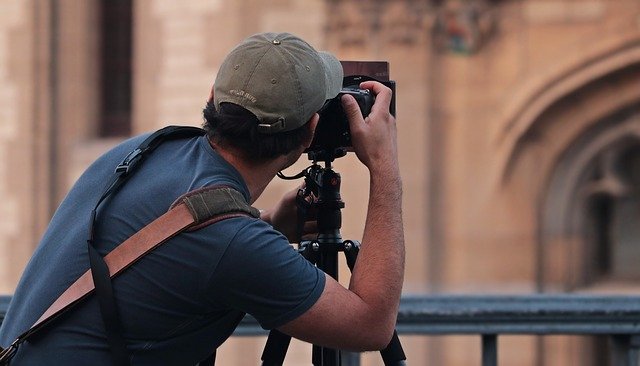Stock photography is defined as a supply of photographs that are licensed for particular uses. Using stock photography helps to lower costs because they’re readily available rather than having to hire a photographer. Today, the Internet makes it possible to search for and find stock images easily and quickly. Interested clients can purchase them and have them delivered online and then use them in a variety of ways. Common stock photography includes photos involving people, pets and scenery such as that related to tourism and travel. There are also photos available that are meant to illustrate an idea.
These photos are called conceptual photography – an early example of which would be Hippolyte Bayard’s, “Self Portrait as a Drowned Man,” taken in 1840. During the 1960s, a movement called “Conceptual Art” became popular, but today it is considered a genre or methodology. Before delving into the presence of stock photography and the future of it in our everyday lives and in helping to grow businesses, it’s important to know a bit of the history of stock photography and how it evolved to become an important tool in online businesses.
The Importance of Stock Photography in History
It wasn’t too long ago that what we know as stock photography came on the scene. Newspapers and magazines began using photographs rather than line drawings in the mid1880s because of the amazing invention of the halftone printing press. In the beginning, newspapers and magazines sent out staff photographers to take the photos they would later use. Then, freelance photographers made their mark in a big way and stock photography has never looked back.
During the 1980s, stock photography enjoyed a movement of popularity by freelance and hobby photographers. The 1990s saw a time of acquisitions by Getty and Corbis – two large companies who saw the profits to be made from this type of photography. By the year 2000, it was obvious with the availability of the Internet that stock photography was going to become even more popular in the coming years. Istockphoto, a website where images could be exchanged made royaltyfree photos affordable.
Affordable photos are now possible because of highresolution digital cameras available to the mass market and opened the path for amateur photographers to share and upload their photos on a website. Today, the goals of stock photography are shifting to focus on providing all photographers with a sustainable career and to further the availability of authentic and useful images for everyone, including online entrepreneurs.
Types of Stock Photography
There are three types of stock photography that you should know about before you begin the search for photos that will fit your needs. They range from very expensive to low priced. They include:
1. Macro stock photography – Macros are exclusive and expensive and photos.
2. Midstock photography – Priced between macroand midstock photography.
3. Microstock photography – All inclusive stock photos that are low priced.
So, when you’re shopping for stock photos and visit a site that offers macro stock photos, you’ll know that they will be more expensive, but the exclusivity means that you won’t see them repeated on other sites. Photographers file their images with an agency that will negotiate licensing fees for the photographer and take a percentage of the fee. Some agencies purchase the images from the photographer and don’t deal with fees and percentages. Rights-managed stock photography is an individual licensing agreement that’s negotiated for each use the purchaser may have. Royaltyfree stock photography allows the purchaser of the photo to use it many times for one license fee.
A purchaser of photos may also obtain exclusive rights which prevent anyone else from using the image either for a specific amount of time or within the same industry. Free, low resolution photos can be obtained for demonstrating a design for an advertiser. These are highresolution images which can then be purchased directly from the website of the advertiser.
The New Venue of Stock Photography
Because of the tremendous advancements in sensor technology photographers now create images that can compete with the most advanced macro lenses. Now, macro photos are more readily available and less expensive. Today, a macro photo must be of a vertical subject and a height of 24 mm (or less).
Stock photographers of today have lots of questions about the future of stock photos. Can money be made with licensing stock images? Is it difficult to sign with an agency? What is next in technology advances and how people use stock photos? All are good questions and most can be answered with what we know today about how stock photography has evolved over the past few years. Thanks to the Internet, more images are being called for by Internet marketers and others who simply want to have a presence on the ‘Net.
Social media sites are also clamoring for stock photos to enhance their sites and many types of photos are demanded. Microstock – lower priced and royalty free images – is emerging as a popular venue for photographers to make additional money and for online users of photography to find exactly what they want for their sites and other uses. Hobbyists and professional photographers are discovering that certain types of photos can become bestsellers. Those that can be used by advertisers are popular with online marketers and they’re purchasing both traditional stock and microstock photos.
Traditional stock photos are highly specialized and are usually provided by professional photographers, although with today’s technological advances in cameras, amateurs can easily list traditional stock photos too. Most photographers make the decision to do both. Ensuring that photo content is in both venues is a good way to make a name for the photographer – and it’s also good for the Internet marketer who may be willing to spend more on an exclusive, specialized photo than one used by many.


